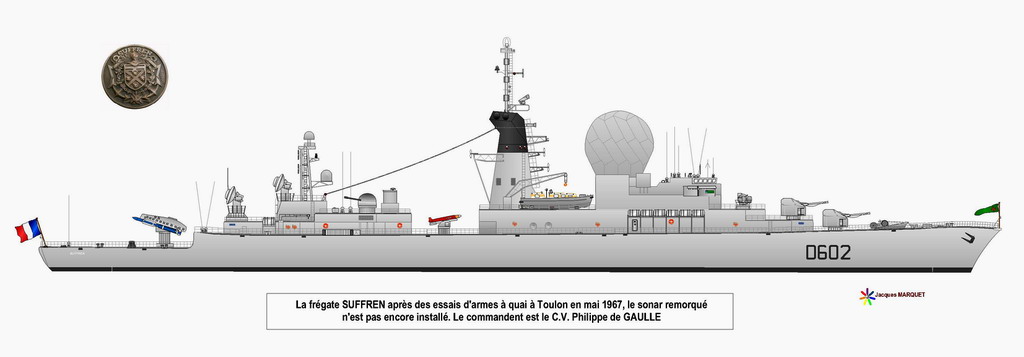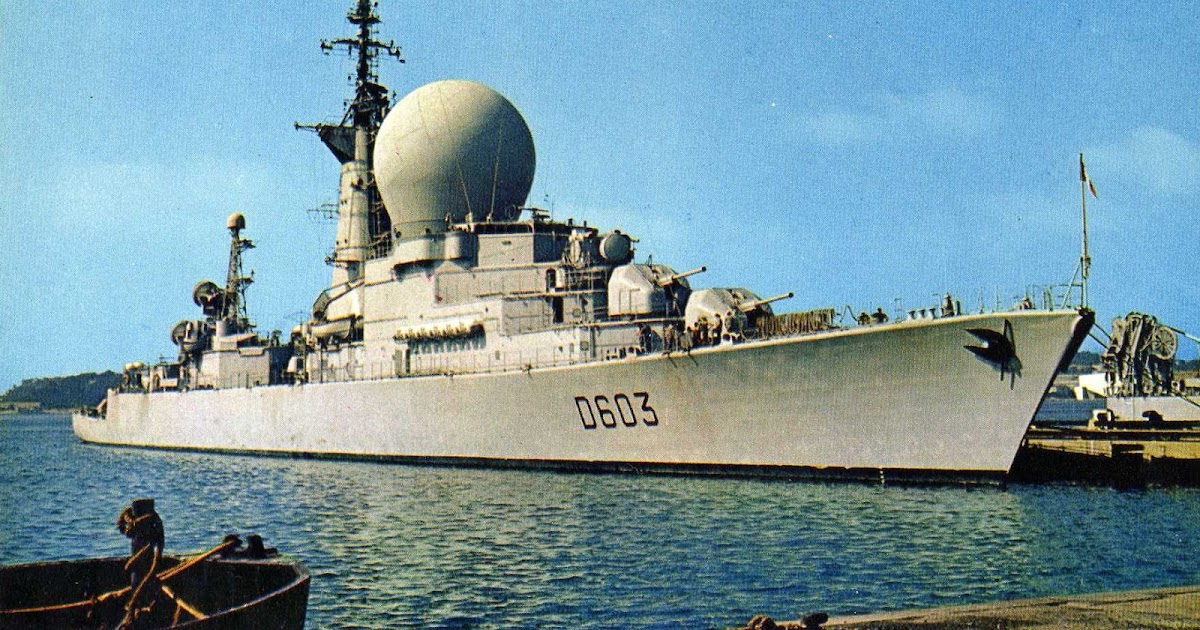- Yes
- No
About this class and its interest in War Thunder
As the scope of naval battles keeps expanding, it would not be strange to one day see dedicated missile ships joining the game as part of cold war modern battles. Although naval battles would change from a gameplay perspective, I do believe it is still possible to make it entertaining as long as it’s not fit in the same category as the current naval battles. The Suffren class being the first dedicated missile platform of the French navy, it becomes a must in that context.
History :
The late 1950’s in France saw the modernization of their entire fleet, and the renewal of the French naval industry. At the same time, technology, was evolving fast, as nuclear submarines were appearing, missile technology out-ranged conventional artillery, and radar technology was evolving fast to keep up with modern jet and overall aerial warfare. It was in this context that the French navy decided, starting 1959, to work on a new generation of modern, versatile warships capable of facing any kind of surface, submarine or aerial threat, but most importantly, capable of protecting the new French carriers, the Foch and the Clémenceau. It was the Suffren class. Initially named “Missile-launching cruiser”, the French navy decided to bring back an old appellation, frigate, to define this new class of ships, the first one since the 19th century. The main equipment of the Suffren revolved around the Masurca AA missile, a dual purpose missile capable of intercepting aircrafts and incoming projectiles. The Suffren was also the first operational ship equipped with Exocet MM38 missiles.
Work on the Suffren started in 1962, and in 1965, the ship was launched. After 2 years of various test, it was finally operational late 1967, and it finally entered service after maintenance in July 1968. It was immediately affected to the Atlantic task force, and started its first travel in spring 1969. It was used as a flag ship for the escort ships, coordinating the defense fleet of the task force. It played this role in many exercises during its career. Traveling all around the globe during its career, it participated to many diplomatic operations. It was heavily modernized in 1988, gaining heavy electronic warfare equipment, and having its AA missiles modernized. It kept sailing for another 13 years, participating in many operations, most notably during the Gulf and Balkan wars. In 2001, after 36 years of service, it was finally put in reserve, as its engine equipment was too costly to modernize. It was decommissioned in 2009 and since then, still serves today as a breakwater on the shores of the island Levant.
Specifications :
Crew : 360 men
DIMENSIONS
Total length : 158m
Total width : 15.57m
draught : 7.25m
weight : 5700t (7385t max)
ENGINE :
type : 4 x Steam Indret, 2 Rateau turbines (72 500 HP)
propellers : 2
max speed : 34 knots
autonomy : 5000 miles at 18 knts
ARMAMENT :
2 x 100mm Dual purpose canons modèle 64 (2 x 1)
2 x 20mm F2 auto canons (2 x 1)
1 x Malafon antisub missile
10 x 550mm L5 anti-sub torpedo
2x Masurca missile ramp (48 Masurca missiles in total)
4 x Exocet missile launchers (4x MM38) (added 1979)
ECW/EW equipment :
AN/SLQ-25 Nixie anti-torpedo system (towed decoy)
2 x AMBL-2A Sagaie countermesure
1 x Radar jammer ARBR-33A
PHOTOS :
Plan :
Photos :
VIDEOS :
Spoiler
https://www.youtube.com/watch?v=Hj3mqPRjaqU
A video of the Duquesne, sister ship of the Suffren, showing the various missiles used as well as the overall specs of the ship.
https://www.youtube.com/watch?v=jG-ucYakibY
Another deliciously 80’s video showing the life aboard the ship. Masurca system in action is shown at 11:15, and at 30:00, an evac exercise shows the doors which are used to reload the Masurca launcher.
Sources :
Spoiler
Caractéristiques
Histoire de la FLM Suffren
https://www.meretmarine.com/fr/content/plongee-dans-les-archives-les-fregates-lance-missiles-suffren-et-duquesne
https://escarboucle-bleue.pagesperso-orange.fr/Hourtin-un-an/Suffren-la-fregate.htm
MOULIN J. , Les frégates Suffren et Duquesne, édition Marine, 1998



